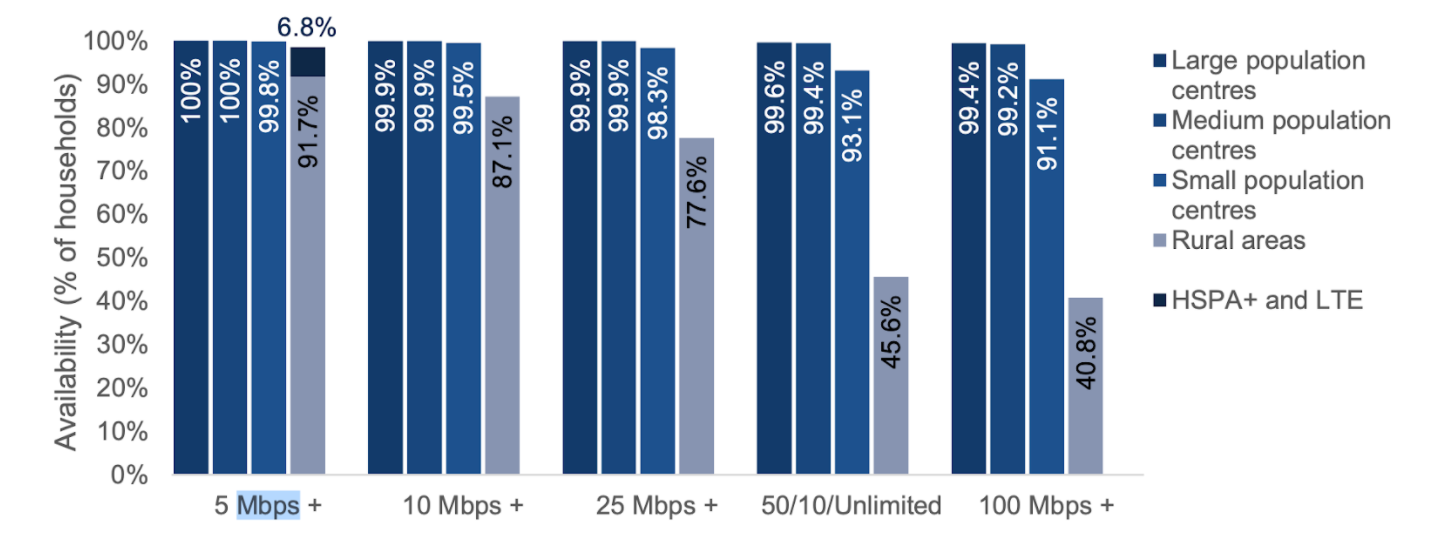Rural access networks provide connectivity between transport networks and individual premises, enabling service providers to deliver residential and business services. Transport networks are comprised of optical fibre, while most rural and remote access networks often use wireless technologies to reach subscribers. In Alberta, digital subscriber lines and cables are also used, where available.
Virtually all premises in rural Alberta are served by at least one wireline or wireless access network, but service levels and the quality of service vary greatly87. Differences in network operating environments, and in the media and architectures of access networks, account for considerable variations in the performance and cost of service provision.
Fixed and mobile wireless are currently the most common solutions for broadband internet access in rural Alberta. Satellite wireless is often used in more remote or sparsely populated areas. Several communities and regional economic development authorities are also in the process of exploring or deploying various models of fibre-to-the-premise (FTTP) solutions (see below).
Regardless of the access technology, there is widespread agreement that improved rural broadband access is necessary for bridging the digital divide, as well as supporting economic and social growth. In rural communities, available data shows significant drops in access for higher-speed broadband service compared to urban counterparts.
Figure 16. Rural communities experience a significant drop-off in availability at progressively higher speeds88.
Rural Fibre
DSL and Cable
Fixed Wireless Access / Wireless Internet Service Providers
Spectrum
Remote Rural Broadband Systems (RRBS)
References
87Government of Alberta. Alberta leads in access to high speed internet, 6 December 2013. Accessed 01 June 2016.
88CRTC. Communications Monitoring Report 2020, pg. 108.
